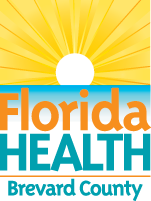It's a New Day in Public Health.
The Florida Department of Health works to protect, promote, and improve the health of all people in Florida through integrated state, county, and community efforts.
Healthy and Safe Swimming Week 2015
May 18, 2015
FOR IMMEDIATE RELEASE
May 18, 2015
Contact: Cynthia Leckey, Environmental Manager; or
Melissa Brock, Environmental Health Director
Florida Department of Health in Brevard County
(321) 633-2100
HEALTHY AND SAFE SWIMMING WEEK 2015
Make a Healthy Splash: Share the Fun, Not the Germs!
The week before Memorial Day (May 18–24, 2015) is Healthy and Safe Swimming Week. The goal of this Week is to maximize the health benefits of swimming by promoting healthy and safe swimming. Just 2.5 hours of water-based (or other forms of) physical activity per week has health benefits across a lifetime. We each play a role in preventing illnesses, caused by germs in the water we share and swim in, and injuries, such as drowning or those caused by mishandling pool chemicals.
Illnesses caused by the germs in the places we swim:
Why Is This Important?
In 2011–2012, almost 100 outbreaks were linked to swimming. Remember, chlorine and other disinfectants kill most germs within minutes, but some can survive for days. Pee, poop, sweat, and dirt from swimmers’ bodies mix with chlorine and form chemicals that can make our eyes red and trigger asthma attacks. So it’s important to keep germs, pee, poop, sweat, and dirt out of the water we share and swim in.
For more info, visit www.cdc.gov/healthyswimming.
A Few Simple and Effective Prevention Steps We Can All Take
- Stay out of the water if you have diarrhea.
- Shower before you get in the water.
- Don’t pee or poop in the water.
- Don’t swallow the water.
- Every hour—everyone out!
- Take kids on bathroom breaks.
- Check diapers, and change them in a bathroom or diaper changing area—not poolside—to keep germs away from the pool.
- Reapply sunscreen.
- Drink plenty of fluids.
Drownings:
Why Is This Important?
Every day, two children less than 14 years old die from drowning. It is the leading cause of injury death for children 1–4 years old.
For more info, visit www.cdc.gov/HomeandRecreationalSafety/Water-Safety/waterinjuries-factsheet.html.
A Few Simple and Effective Prevention Steps We Can All Take
- Keep swimmers safe in the water.
- Make sure everyone knows how to swim.
- Use life jackets appropriately.
- Provide continuous, attentive supervision close to swimmers.
- Know CPR.
- Prevent access to water when pool is not in use.
- Install and maintain barriers like 4-sided fencing and weight-bearing pool covers.
- Use locks/alarms for windows and doors.
Injuries caused by mishandling pool chemicals (for pool operators and residential pool owners):
Why Is This Important?
Pool chemicals are added to the water to kill germs and maximize disinfection. Each year, however, mishandling of pool chemicals chemicals by pool operators and residential pool owners leads to 3,000–5,000 visits to emergency departments across the U.S.
For more info, visit www.cdc.gov/healthywater/swimming/pools/preventing-pool-chemical-injuries.html.
A Few Simple and Effective Prevention Steps We Can All Take
- Read and follow directions on product labels.
- Wear appropriate safety equipment, such as goggles and masks, as directed, when handling pool chemicals.
- Secure pool chemicals to protect people and animals.
- Add pool chemicals poolside ONLY when directed by product label and when no one is in the water.
- Prevent violent, potentially explosive, reactions.
- NEVER mix different pool chemicals with each other, especially chlorine products with acid.
- Pre-dissolve pool chemicals ONLY when directed by product label.
- Add pool chemical to water, NEVER water to pool chemical.
For more information visit www.brevardeh.com.
###





Connect with DOH